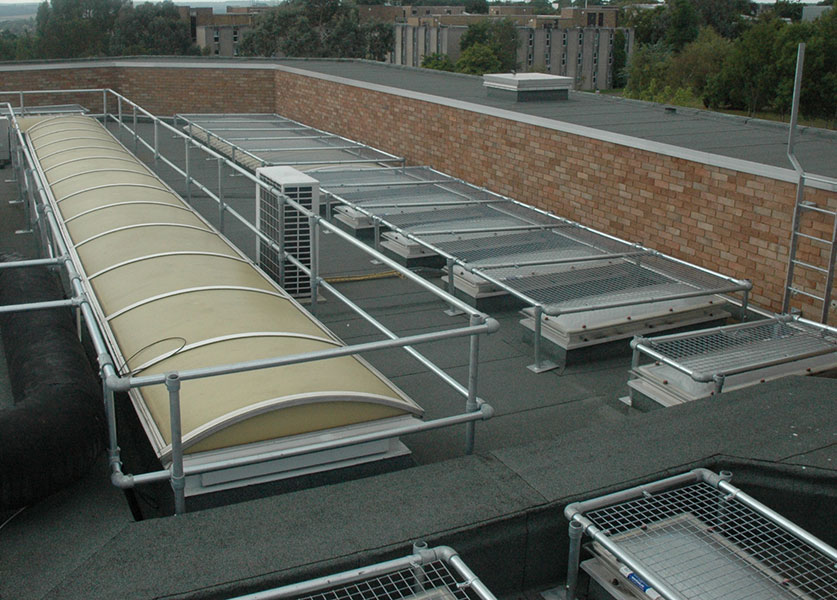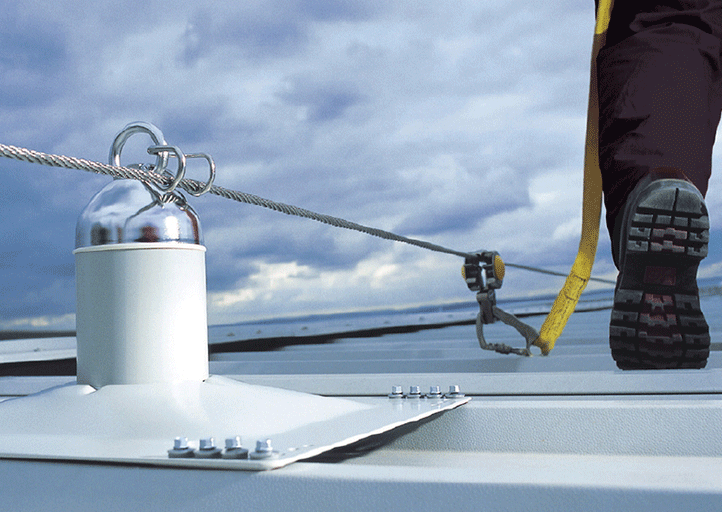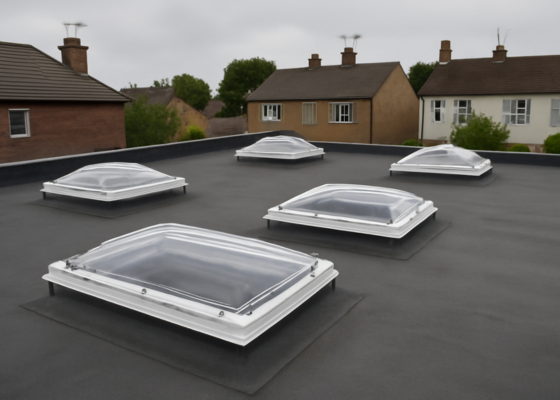When talking about work at height to our customers, many immediately think about the dangers at the roof’s edge. And while unprotected edges are a significant risk, they’re not the only threat. There’s another, often overlooked hazard underfoot – fragile rooflights.
And it’s not just an occasional issue. Falls through fragile surfaces, particularly rooflights, account for around 22% of all fatal falls in construction. That’s a sobering statistic.
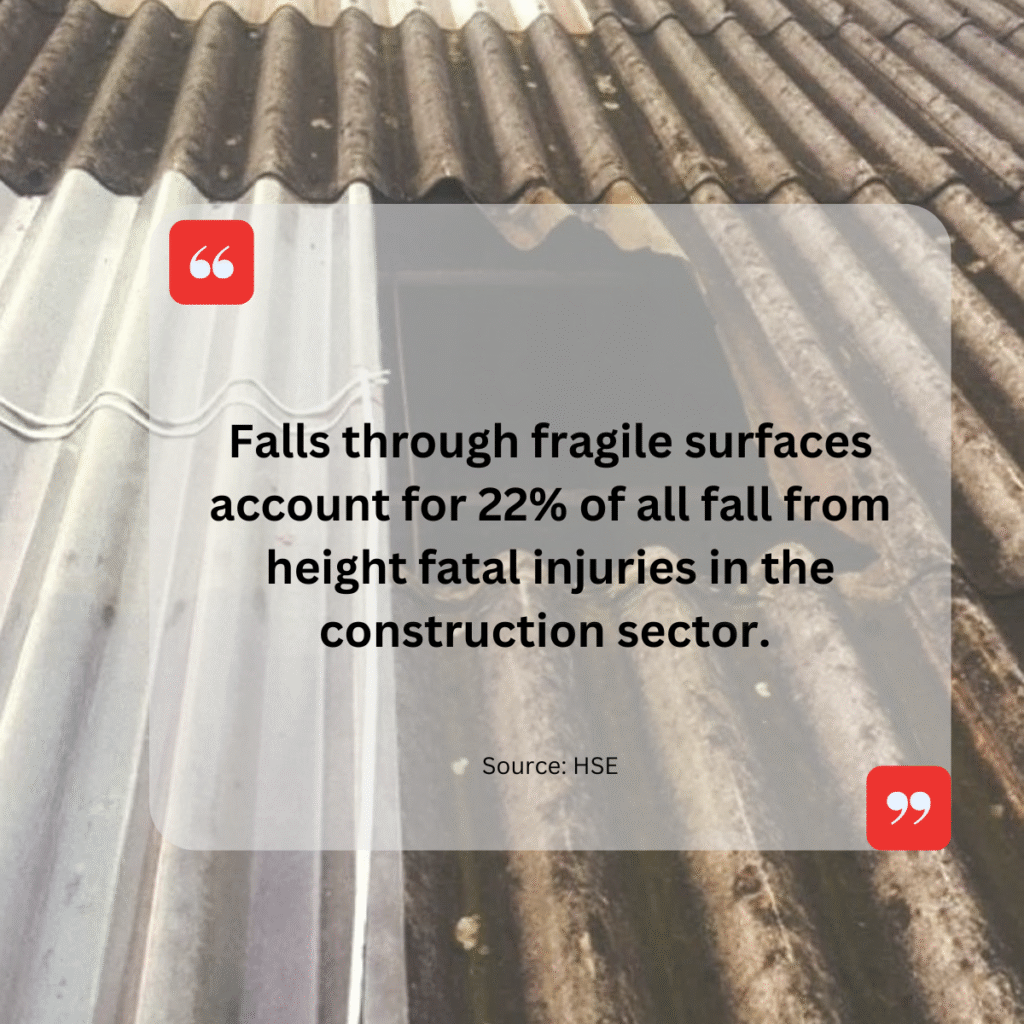
More people fall through roofs than off them
It’s a hard truth that building owners and those responsible for maintenance must take seriously. Rooflights, fibre-cement sheets, corroded metal panels and slates or tiles in poor condition can all give way underfoot. Even materials that were once safe can become brittle or weakened over time. Add a layer of moss, dirt or even paint, and the danger becomes invisible. Quite literally.
Rooflights are particularly risky. Often positioned in line with the roof, they can be hard to spot, especially in poor light or if painted to reduce glare. And while they may have been sturdy when installed, they can deteriorate over time. Plastic can age, or glass can crack, weaken, and become dangerously fragile.
Once installed, there’s no legal requirement to replace them as they age and weaken, which means many roofs can have dangerous weak points without building owners realising it.
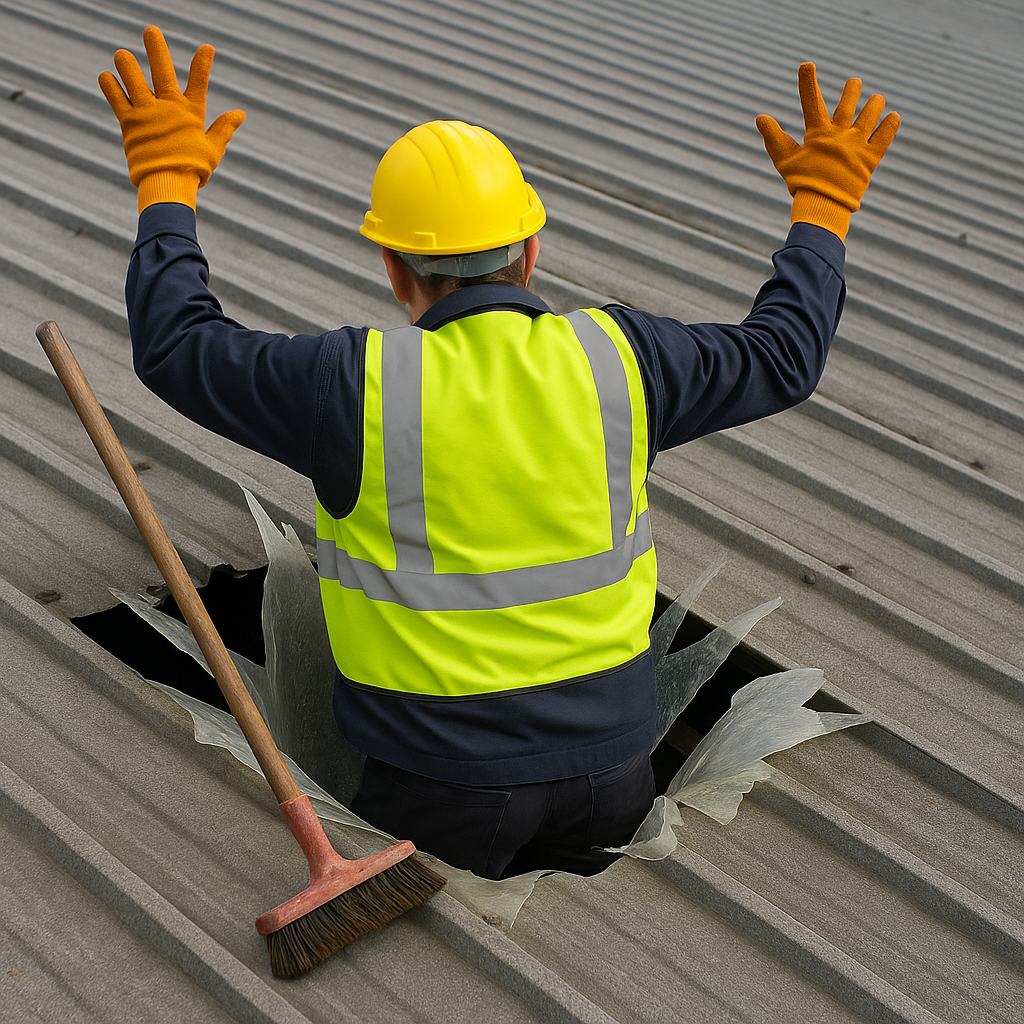
Shot duration, big risks
Those performing small, short-term cleaning or maintenance tasks are often most at risk. People sometimes think these jobs don’t warrant full safety measures, but they absolutely do.
Everyone involved in roof access, from clients and building owners to contractors and workers, must treat fragile surfaces as a priority hazard.
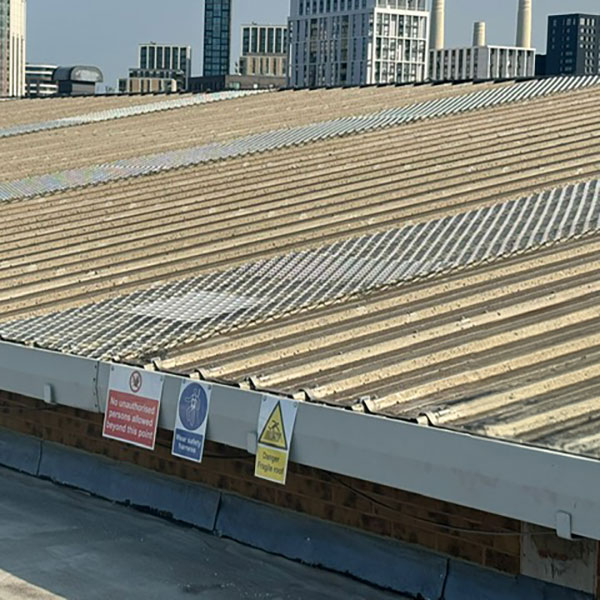
What can building owners do?
If you own or manage a building with a roof that people may need to access, it’s your responsibility to make sure it’s safe. Here’s how:
- Assume all rooflights are fragile unless a competent person has confirmed otherwise.
- Never allow roof access without the proper fall protection equipment. And ensure workers are trained to use it correctly.
- Try to work from the ground or using a mobile elevated work platform (MEWP) or tower scaffold where possible.
- Make rooflight locations clear to anyone working on the roof.
- Request a method statement from contractors explaining how they plan to work safely on your roof.
- Stop any work immediately if it looks unsafe or the safety plan isn’t being followed.
Fragile rooflights: A practical solution
The most effective way to protect people from falling through fragile rooflights is to cover them physically. Typically, rooflight protection features a strong mesh either mounted on a metal frame that surrounds the rooflight or fixed over the rooflight on an industrial roof. The protection creates a robust barrier that prevents falls while still allowing light to enter the building.
These simple measures are simple, cost-effective, and quick to install. Compared to the incalculable cost of a serious injury or fatality, they’re the obvious solution for protecting people from hidden dangers underfoot.
Don’t wait for a near miss or accident
If you’re in any doubt about the condition of your roof or its features, stop work and get it inspected by a competent professional. A roof that was safe once may no longer be, and when lives are at stake, it’s not worth the risk.

